Ultimate Guide to Ganga Aarti Time in Varanasi: Evening & Morning
This travel guide will take you through the experience of immersing yourself in the Ganga Aarti and understanding its deep spiritual significance along with Ganga aarti time in Varanasi.
The Ganga Aarti in Varanasi is a must-see, with two daily performances. The evening aarti at Dashashwamedh Ghat starts around 7 PM in summer and 6 PM in winter, just after sunset. The morning aarti at Assi Ghat is equally captivating, featuring Vedic chants, raga, and yoga.
Varanasi Ganga Aarti Time
It runs from 5 AM to 7 AM in summer and 5:30 AM to 7:30 AM in winter, offering a serene experience at dawn with fewer crowds. Plan your visit to witness this spiritual spectacle and learn bout Ganga Aarti Time in Varanasi.
Suggested Read: Burning Ghats Varanasi: Guide to Manikarnika Ghat India
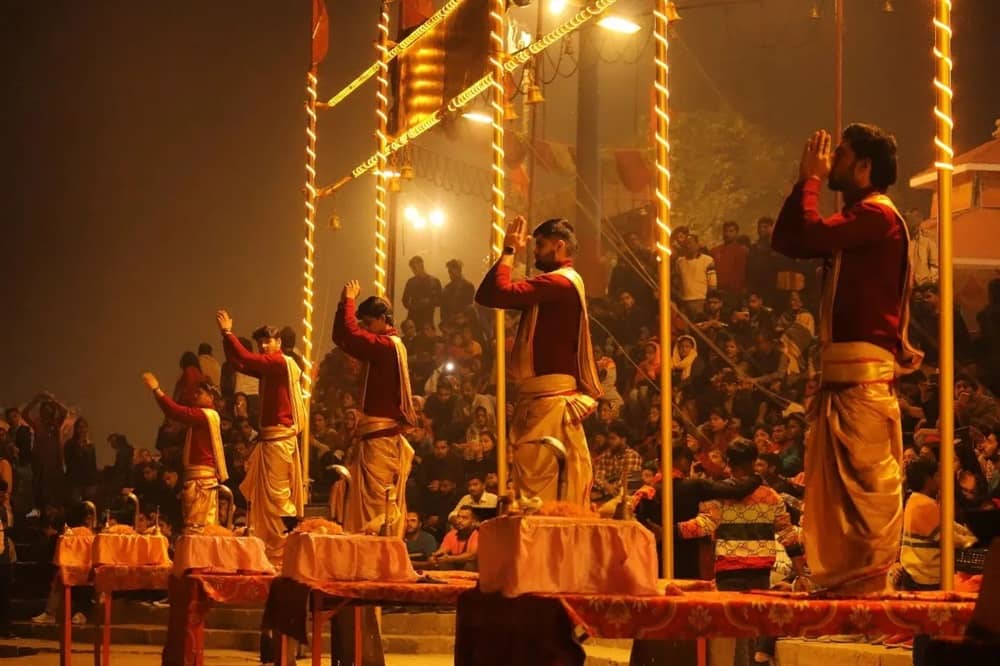
Dashashwamedh Ghat: Ganga Aarti Time in Varanasi:
- Every morning and evening, the sacred Ganga Aarti takes place on the revered banks of the Ganges in Varanasi, creating a powerful spiritual atmosphere.
- At Dashashwamedh Ghat, priests perform the aarti with large brass lamps, lighting up the entire ghat with a divine glow. The chanting of sacred mantras fills the air, enhancing the spiritual experience.
- Start your day with the serene Subah-e-Banaras morning aarti at Assi Ghat, or attend the grand evening aarti at Dashashwamedh Ghat to witness the river come alive with devotion and rituals.
Dashashwamedh Ghat Ganga Aarti Time in Varanasi: 7 PM PM (Summer)/ 6 PM PM (Winter)
Morning Assi Ghat Ganga Aarti
Aasi Ghat: Ganga Aarti Time in Varanasi
- Every day, thousands of visitors flock to Assi Ghat to experience the Ganga Aarti, both in the morning and evening. The Morning Aarti begins at 5:00 AM in summers and 5:30 AM in winters, while the Evening Aarti starts at 6:30 PM in summers and 6:00 PM in winters, lasting for about 45 minutes.
- The Ganga Aarti is a mesmerizing display of devotion, allowing us to connect with the divine as the holy Ganga River is honored daily. It is truly a must-see for every traveler
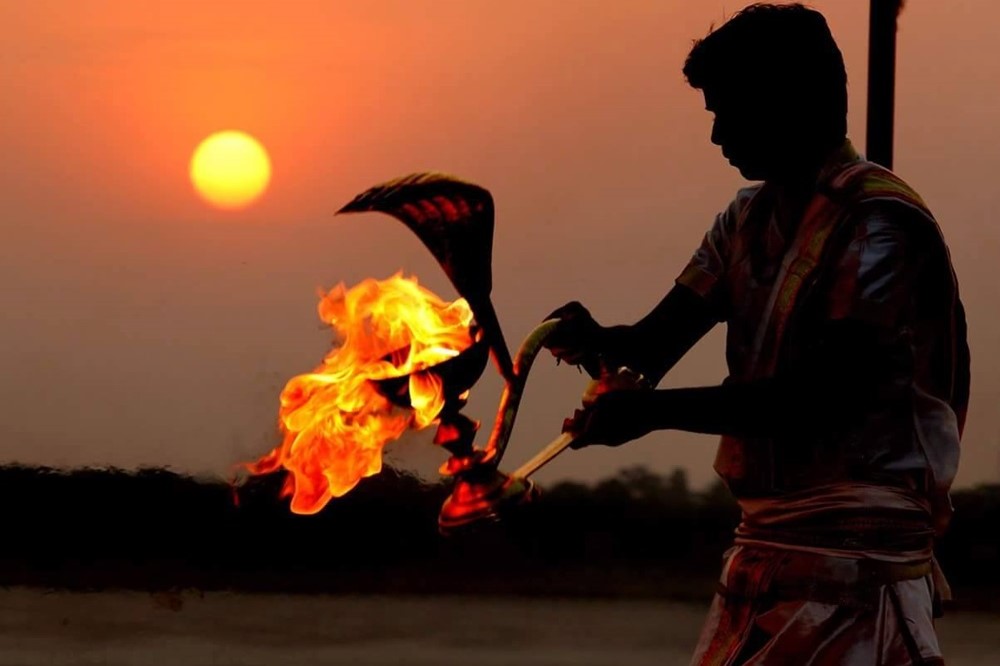
Varanasi Ganga Aarti
The renowned Varanasi Ganga Aarti has drawn pilgrims to the holy banks of the Ganga for centuries. A celebration of the Panch Tattvas—earth, sky, fire, and water—the aarti provides a mesmerizing spiritual experience. Whether it’s the serene Subah-e-Banaras at Assi Ghat in the morning or the grand evening aarti at Dashashwamedh Ghat, the ritual is a must-see event preserving ancient traditions.
In Varanasi, you can experience the magic of classical music in the early morning while witnessing people in deep meditation along the sacred banks of the Ganga River. Many visitors come here to practice yoga and meditation, drawn by the city’s spiritual aura. The most sought-after experience is the Ganga Aarti, a mesmerizing ritual held at dusk and dawn.
The evening Ganga Aarti at Dashashwamedh Ghat and the Subah-E-Banaras morning aarti at Assi Ghat offer a unique spiritual experience. Be sure to plan your visit around the Ganga Aarti to fully immerse yourself in Varanasi’s spiritual heartbeat.
If you’re planning to visit Varanasi in 2 days, you must know the Ganga Aarti time in Varanasi before visiting Varanasi. here are five must-see places that showcase the city’s rich spiritual and cultural heritage:
Suggested Read: Dhamek Stupa in Sarnath: History | Timings | Architecture
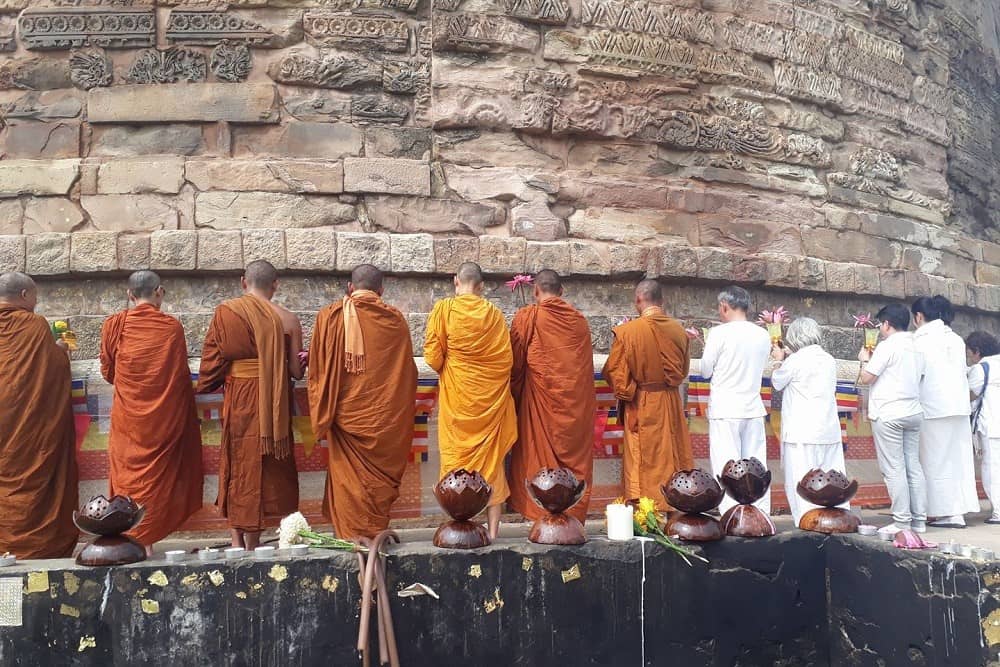
About Ganga Aarti
Ganga Aarti is a divine Hindu ritual performs to honor the Ganges River, personified as Maa Ganga. This evening morning ceremony holds profound spiritual significance and happens daily at various ghats (steps leading to the river) along the Ganges. The most famous locations for Ganga Aarti in India are: Varanasi, Haridwar, and Rishikesh.
Significance of Ganga Aarti:
The Ganga Aarti happens to express gratitude to Maa Ganga for her life-sustaining waters and to seek her blessings. Devotees believe that participating in or witnessing this ritual can purify the soul, absolve sins, and bring peace and prosperity. The aarti is also an opportunity to pray for the well-being of oneself and loved ones.
Main Rituals Involved:
- Lighting of Lamps: Devotees light earthen lamps filled with oil and place them on the river’s surface, creating a mesmerizing sight as they float downstream.
- Chanting and Singing: Priests and devotees chant hymns and sing bhajans (devotional songs) in praise of Maa Ganga.
- Offering of Incense and Flowers: Incense sticks and flowers are offered to the river, symbolizing respect and devotion.
- Bell Ringing: The ringing of bells signifies the commencement and conclusion of the aarti, adding to the ritual’s auspiciousness.
Experiencing Ganga Aarti:
- Varanasi: The Dashashwamedh Ghat in Varanasi is famous for its grand Ganga Aarti, attracting pilgrims and tourists from around the world
- Haridwar: At Har Ki Pauri, a prominent ghat in Haridwar, the Ganga Aarti is a daily ritual that draws numerous devotees all over India and abroad.
- Rishikesh: Triveni Ghat in Rishikesh is another significant location where the Ganga Aarti happens with great devotion.
If you plan to attend the Ganga Aarti, it is advisable to arrive early due to the large gatherings. The ceremony typically takes place at sunset, with timings varying based on the season. Being present at this sacred event offers a profound spiritual experience and a glimpse into India’s rich cultural heritage.
Places to see in Varanasi before Ganga Aarti
1. Sarnath
- Located about 10 km from Varanasi, Sarnath is a peaceful town with immense historical significance. This Buddhist site is home to ancient stupas, temples, and museums. Visitors are captivated by the serene atmosphere and the chance to explore excavated ruins that reflect the town’s deep spiritual history.
- Famous for: Sarnath Museum
- Distance from Varanasi: 10 km
2. Nepali Temple
- Known as Shri Samrajeswar Pashupatinath Mahadev Mandir, this temple was built by the King of Nepal in the 19th century and resembles the famous Pashupatinath Temple in Kathmandu. The temple is dedicated to Lord Shiva and is a popular site for its unique architecture made of wood, stone, and terracotta.
- Famous for: Traditional Nepalese architecture
- Location: Near Ganga Aarti Ghat
Dashashwamedh Ghat
3. Dashashwamedh Ghat
- This sacred ghat is the center of spiritual activity in Varanasi. The Ganga Aarti performed here every evening is a mesmerizing event that draws hundreds of visitors. The ghat is bustling with pilgrims and tourists, and the lively atmosphere makes it a must-visit.
- Famous for: Ganga Aarti and vibrant street life
4. Kashi Vishwanath Temple
- One of the 12 Jyotirlingas, Kashi Vishwanath Temple is devoted to Lord Shiva and is considered the spiritual heart of Varanasi. Located near Dashashwamedh Ghat, it is one of the most important temples in India. The temple complex also houses smaller shrines to other deities.
- Famous for: Shiva Jyotirlinga and architectural beauty
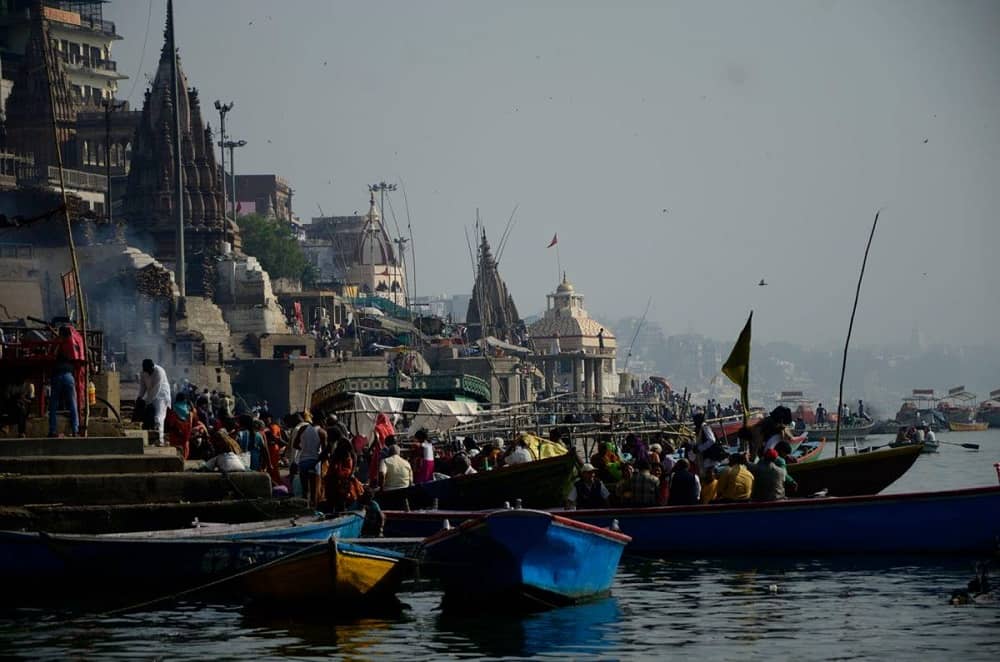
Manikarnika Ghat- Burning Ghat
5. Manikarnika Ghat
- Known as the burning ghat, Manikarnika Ghat is Varanasi’s main cremation site, where funeral pyres constantly burn. It holds deep spiritual importance, as Hindus believe that being cremated here ensures liberation from the cycle of birth and death.
- Famous for: Cremation rituals and spiritual significance
- These sites will give the accurate insight of Ganga aarti time in Varanasi which offers a deep sense of the city’s spiritual atmosphere, making your 2-day trip to Varanasi unforgettable.
About Varanasi
Varanasi is a very old city in India, near the Ganga River. It is also called Benaras, Banaras, or Kashi. People have lived here since a very, very long time, even before my great-great-grandparents were born—maybe around the 11th century B.C.! That’s super long ago!
This city is very special and is known as the spiritual capital of India. Many people come here to take a bath in the Ganga River because they believe it is holy. Some also come to say goodbye to their loved ones who have passed away. Varanasi has many temples, like the Kashi Vishwanath Temple, which is golden and is for Lord Shiva.
A long time ago, even Buddha came here and shared his first big lesson, called the Wheel of Dharma, at a place called Sarnath. Later, a great teacher named Adi Shankara helped people worship Shiva even more.
Varanasi is also famous for things like silk, perfumes, and ivory works. Can you imagine a city filled with the smell of perfumes? It sounds magical! There are also ghats, which are like stone steps near the river. People pray and bathe here. There are so many, but the most famous ones are Dashashwamedh Ghat, Manikarnika Ghat, and Harishchandra Ghat.
There’s even an old fort called the Ramnagar Fort. It has balconies and courtyards where you can stand and see the Ganges.
So many poets, musicians, and writers come from Varanasi. The city is full of music and stories. I think if I lived there, I’d hear a lot of beautiful songs every day!
Ganga Aarti Time in Varanasi Ganga Aarti Time in Varanasi Ganga Aarti Time in Varanasi Ganga Aarti Time in Varanasi Ganga Aarti Time in Varanasi Ganga Aarti Time in Varanasi Ganga Aarti Time in Varanasi Ganga Aarti Time in Varanasi
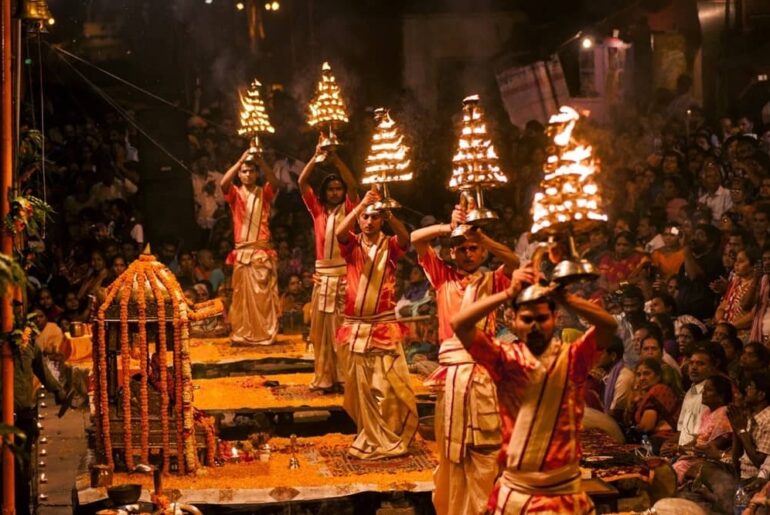
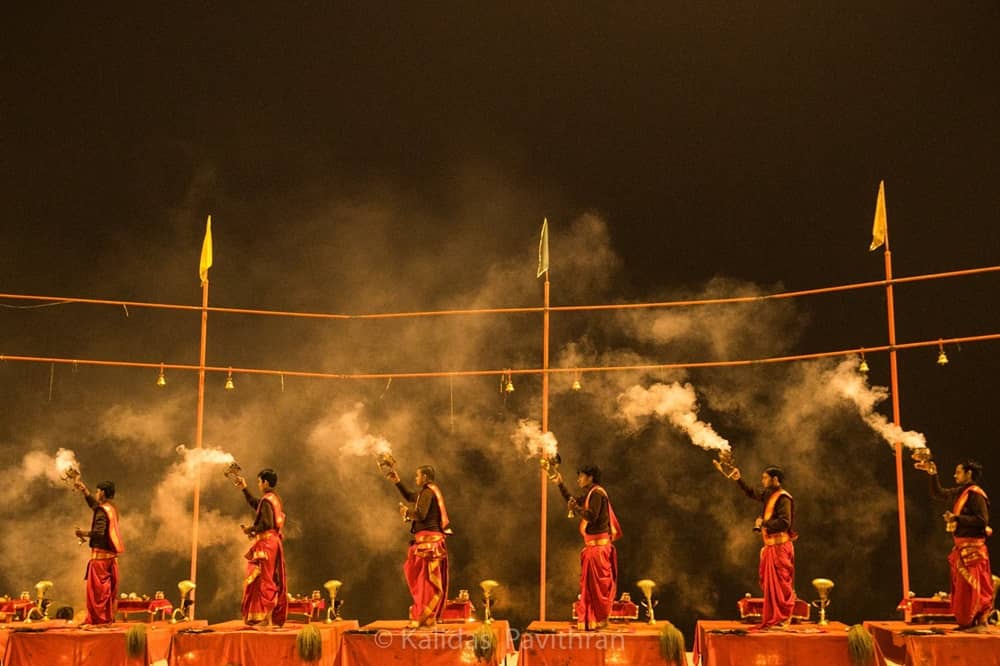

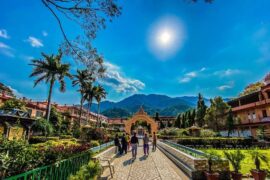
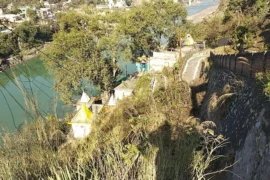
Comments are closed.